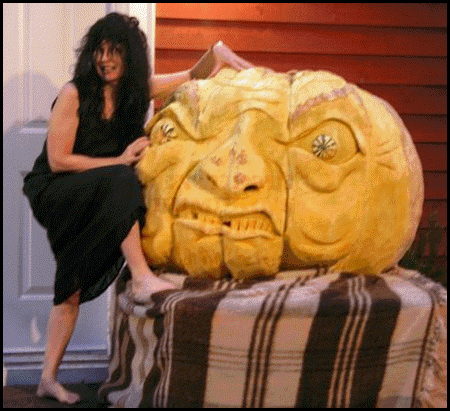Garden: An A-Z
Emma Cooper
(Permanent Press)

The plants, insects, herbs covered here seem to be picked --- so to speak --- at random ... and there aren't enough of them. The author doesn't even stick to those she likes, often admitting that the item in question is "not one of my favourites," not usually grown in her garden because "I don't like them." By "B is for Broccoli" Cooper has already covered three veggies and herbs she would happily never pop in her mouth, including aubergines, basil, and borage. With so few plants covered, you would think she would at least stick to her favorites.
There are some beautiful if tiny pictures in the book, and some very interesting tidbits of information dispersed throughout. "Watercress beds went out of business in the 1980s, a victim of the modern food supply system that can easily provide vegetables from all over the world, every day of the year."
- Prior to that, watercress was a staple vegetable and prized for its nutritional value. After a decade or so of neglect, the Ewelme watercress beds are being restored as a heritage site and wildlife sanctuary.
"U is for urine" covers the practice of using your own diluted wee to water your garden. After all, "you can't give yourself a disease you don't already have by coming in to contact with your urine." But it might rule out inviting your friends and neighbors over for a salad from your own freshly soaked garden: they may not thank you for it. Cooper opts to leave out the nose-wrinkling practice of creating humanure, and, instead, advises us to pick up a copy of the Humanure Handbook for further digging into it.
The Alternative Kitchen Garden can be used as a sounding board for whatever topics may be of further interest to you (and which ones may not). For instance, "S is for Seed Saving" tempted me enough to go out and get a copy of Seed to Seed by Suzanne Ashworth, an in-depth look at the techniques of separating and storing seeds. Cooper begins the seed chapter with somewhat confusing information for a beginner, i.e. the difference between inbreeders and outbreeders, cross-pollination, annuals vs. biennials --- but she later reassures us that seed saving need not be all gardening jargon and research:
- Although it may seem daunting, it doesn't have to be. A lot of seed saving can be done from happy accidents --- radishes and brassicas that have run to seed, or flowers that you've forgotten to dead head. The first seeds I saved were from my achocha, which has hard, black seeds that are easy to remove. The were followed by the welsh onions (hang them upside down in a paper bag to catch all the seeds as they dry out) and dwarf marigolds. In most cases you will have plenty of seeds to share.
The Alternative Kitchen Garden covers a wide, and seemingly random selection of information pertaining to numerous aspects of gardening. From climate change to the ravages of mold in your garden to achocha --- "one of the Lost Crops of the Incas, an ancient food crop from the Andes" --- no subject is covered in depth or breadth enough to satisfy our curiosity. The book might be described as a coffee table book ... minus the advantage of an eye-popping hardbound cover and large photographs.